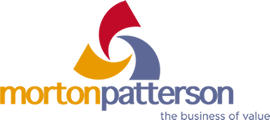In my last piece, I wrote about the value of drafting a proposal with options and sending it for the prospective client to review: having discussed options, objectives, and measurement in the meeting.
I recall a meeting with a client where he could see how much business they were losing while we did the calculations. Visibly, I could see him twitch, and his forehead furrowed. The reality of his situation fully dawned on him. I had his full attention.
We discussed their objectives, what needed to be done, the options available, how to measure success, and a detailed outline of the following steps and all that was required next was as a summary document – what I call – an ‘ As I understand it document.’
I’ve previously emphasised that if you aim for that kind end-to-end conversation, thorough preparation is not just necessary; it’s essential. You must have a full understanding of your rate card, the products you offer, and how you can deliver them and the difference your intervention will make – your value.
If you wing it you are likely to say the wrong thing, undercharge or make a promise that you cannot deliver on.
Being prepared will give you the confidence to steer the conversation in the right direction, ask the right questions and get your client to focus on what a successful intervention will look like in the future.
But, a strange this happened, I had to ask myself the question, why do I stop doing what was working? I had forgotten entirely about this process until a fellow consultant reminded me of the value of:
- Having the whole discussion in the meeting.
- Not leaving it to the draft proposal which is sent for their review but doing it there and then.
However, let’s be clear – one size does not fit all as both approaches work very well, it’s a judgment call.
That said, when you sit with your potential client, it’s not just about you presenting your services. It’s about a collaborative discussion, where you both contribute to understanding their challenges, what they want to achieve, the value of achieving it, and the impact of no activity.
This approach makes them feel more engaged and valued in the process.
As you wrap up, your client can rest assured in the understanding that in your future communications there will be no surprises.
The clarity and understanding you’ve achieved in the meeting will serve you in good stead and go some way in developing an honest and respectable relationship.
I’d like to encourage you not to leave the meeting until you are both very clear.
